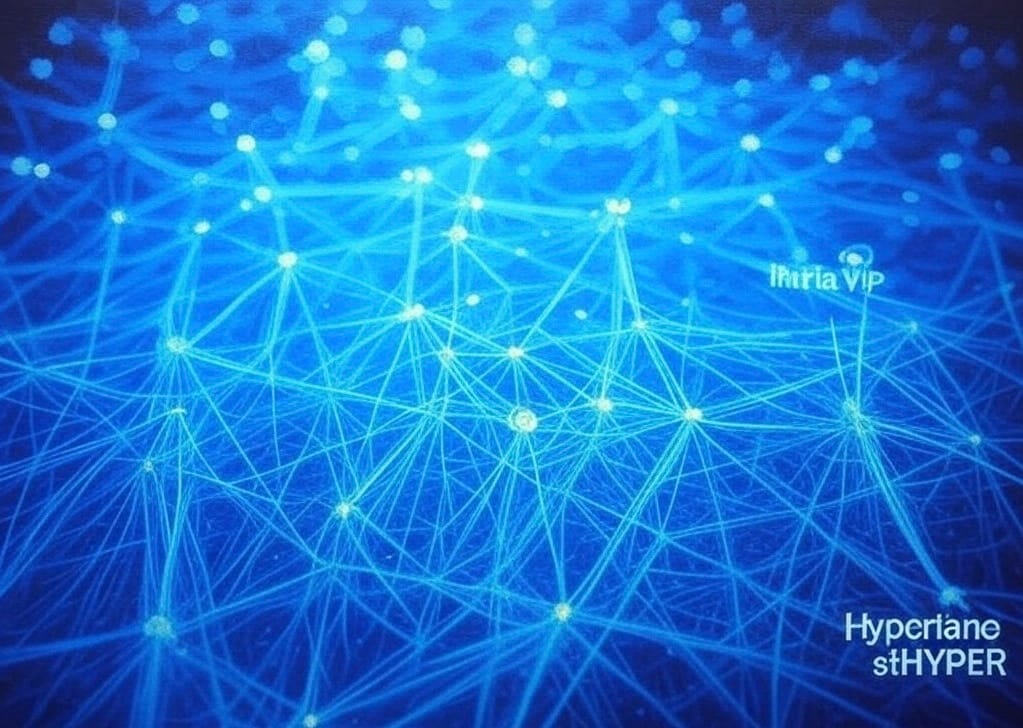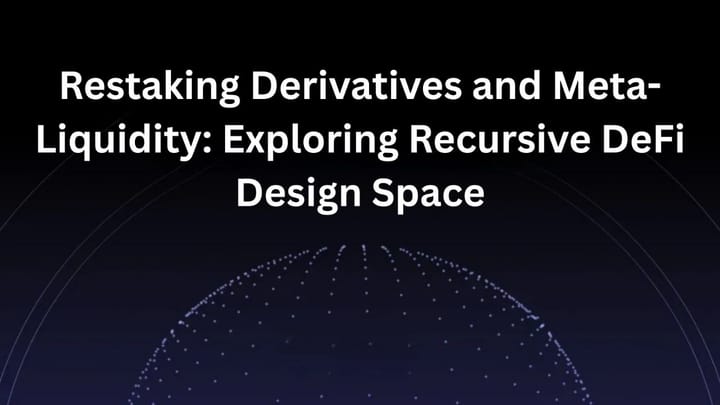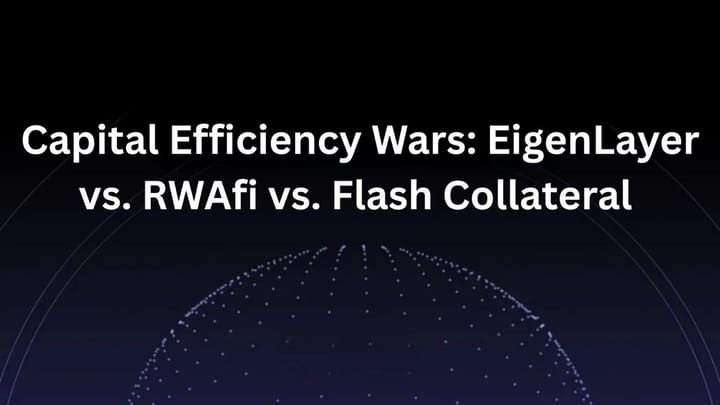A Deep Dive into Initia’s VIP Program and Hyperlane’s stHYPER Incentive Program

In the rapidly evolving world of blockchain interoperability and multi-chain ecosystems, projects like Initia and Hyperlane are pioneering innovative solutions to align incentives among users, developers, and networks. Initia’s Vested Interest Program (VIP) and Hyperlane’s stHYPER Incentive Program are two such frameworks designed to foster economic alignment, reward meaningful contributions, and drive ecosystem growth.
Initia’s Vested Interest Program (VIP)
•Overview
Initia is a layer-1 blockchain designed to support a network of interwoven rollups, or "Minitias," which are customizable layer-2 solutions that leverage Initia’s infrastructure for liquidity, security, and interoperability. The Vested Interest Program (VIP) is Initia’s flagship economic framework aimed at aligning incentives across users, developers, and Minitias to ensure the success of the ecosystem and its native token, INIT. Unlike traditional airdrop models that distribute tokens once and often lead to short-term hype, VIP is a long-term, programmatic reward system that incentivizes sustained activity and value creation.
•Objectives
The primary goal of VIP is to make INIT the unifying asset across Initia’s multi-chain ecosystem. By distributing INIT tokens to participants who contribute to the network’s growth, Initia aims to:
Drive demand for INIT: Encourage its use as the denominating asset across Minitias.
Align incentives: Ensure that users, developers, and Minitia operators work toward the collective success of the ecosystem.
Foster innovation: Reward Minitias for creating novel use cases and applications that enhance the utility of INIT.
Solve principal-agent problems: Mitigate misalignments between ecosystem participants by tying rewards to measurable contributions.
Mechanics of VIP
VIP operates by distributing escrowed INIT tokens (esINIT), which are initially non-transferable and vest over time, encouraging long-term commitment. The program allocates rewards through two main pools: the Balance Pool and the Weighted Rewards Weighted (WRW) Pool.
1. Balance Pool
•Purpose: Incentivizes Minitias to lock INIT tokens, promoting their use within the ecosystem.
•Allocation: Rewards are distributed based on the proportion of INIT tokens locked by a Minitia relative to the total locked across all Minitias at a given stage (typically every two weeks).
•Impact: This mechanism encourages Minitias to integrate INIT deeply into their operations, such as using it for gas fees or staking, thereby increasing its utility and demand.
2. Weighted Rewards Weighted (WRW) Pool
•Purpose: Rewards Minitias based on their economic activity and contributions to the ecosystem, such as transaction volume or user engagement.
•Allocation: Unlike the Balance Pool, the WRW Pool focuses on dynamic metrics that reflect a Minitia’s impact. The exact weighting criteria are set by Initia’s governance and can evolve through on-chain proposals.
•Impact: This pool incentivizes Minitias to develop high-value applications and drive user activity, aligning their success with the broader ecosystem.
3. Operator Commission
•Minitia operators can set an operatorCommissionRate (( c )) to receive a portion of the rewards allocated to their Minitia. This rate is adjustable but limited to prevent abuse.
•User Rewards: After accounting for the operator commission, user rewards are distributed based on their activity within a Minitia, such as staking or transaction volume.
4. Reward Distribution
•Rewards are distributed as esINIT tokens, which vest over time to encourage long-term holding.
•The poolSplitRatio between the Balance and WRW Pools is determined by Initia’s governance, allowing the ecosystem to adapt incentives based on evolving needs.
•Rewards are distributed biweekly, ensuring continuous engagement and reducing the volatility associated with one-time airdrops.
Significance
VIP addresses several challenges faced by multi-chain ecosystems, such as the Cosmos Hub’s struggle to retain liquidity and relevance. By focusing on demand-side incentives rather than supply-side token burns, Initia creates a sustainable model for value accrual. The program’s emphasis on programmatic, activity-based rewards ensures that participants are incentivized to contribute meaningfully, fostering a vibrant ecosystem of interwoven rollups. Posts on X highlight the community’s enthusiasm for VIP, noting its potential to maintain engagement through consistent, impact-driven rewards.
Example Use Case
Imagine a Minitia that develops a decentralized exchange (DEX) and locks 1 million INIT tokens to participate in the Balance Pool. If the total INIT locked across all Minitias is 10 million, this Minitia would receive 10% of the Balance Pool rewards for that stage. Additionally, if the DEX processes high transaction volumes, it could earn significant WRW Pool rewards, a portion of which would be passed to users based on their trading activity. This dual-incentive structure encourages both token locking and ecosystem growth.
Hyperlane’s stHYPER Incentive Program
•Overview
Hyperlane is a permissionless interoperability protocol that enables seamless communication and asset transfers across over 140 blockchains, including Ethereum, Solana, and Cosmos SDK-based chains. Its native token, HYPER, powers the ecosystem, with stHYPER serving as a liquid staking token that incentivizes users to secure the network and participate in its growth. The stHYPER Incentive Program is part of Hyperlane’s broader Expansion Rewards framework, designed to reward users, developers, and validators for driving cross-chain activity and securing the protocol.
•Objectives
The stHYPER Incentive Program aims to:
•Secure the network: Encourage users to stake HYPER to provide economic security for cross-chain messaging.
•Reward activity: Distribute HYPER tokens to users and applications based on their protocol usage, measured by Interchain Gas Payment (IGP) fees.
•Promote long-term engagement: Introduce mechanisms like the HyperStreak multiplier to reward continuous participation.
•Decentralize ownership: Allocate a significant portion of HYPER tokens to the community through ongoing rewards and airdrops.
Mechanics of stHYPER Incentives
The stHYPER Incentive Program is integrated into Hyperlane’s tokenomics, which include staking, Expansion Rewards, and the Expansion Drop. Below are the key components:
1. Staking and stHYPER
•Process: Users stake HYPER tokens in the Symbiotic vault on Ethereum, receiving stHYPER as a liquid staking token that represents their staked position. stHYPER can be used within the ecosystem while still earning rewards.
•Rewards: Stakers earn rewards at a fixed rate per epoch (approximately 30 days), calculated based on their staked amount and the total staked pool. Validators verifying cross-chain messages receive a commission from these rewards.
•Unstaking: Unstaking requires a full epoch (~30 days) wait period, after which users can withdraw their HYPER manually.
2. Expansion Rewards
•Structure: Expansion Rewards are distributed quarterly over four years, allocating 25.5% of the total 1 billion HYPER supply to users and applications based on protocol usage.
•Distribution: By default, 85% of rewards go to end users, and 15% go to application owners, though applications can adjust this split. Rewards are based on IGP fees, with a minimum qualification threshold of $3 per quarter.
•HyperStreak Multiplier: Users who continuously hold stHYPER or stake HYPER from the Token Generation Event (TGE) on April 22, 2025, can earn a HyperStreak multiplier of up to 1.6x. To achieve the maximum multiplier, users must hold stHYPER from Day 1.
•Impact: This ongoing reward system incentivizes consistent protocol usage and staking, aligning user incentives with network growth.
3. Expansion Drop
•Purpose: A retroactive airdrop at TGE, distributing 7.5% of the HYPER supply (6.25% from Expansion Rewards and 1.25% from the Strategic Launch Provision) to early users who spent at least $5 in IGP fees before the February 28, 2025 snapshot.
•Eligibility: Includes users of chains where Hyperlane is the canonical interoperability solution (e.g., Eclipse, Injective EVM), holders of specific NFTs (e.g., Celestine Sloth Society), and liquidity providers for TIA on Manta or Arbitrum.
•Claim Process: Users had to pre-claim by April 13, 2025, and claim tokens by May 22, 2025, via the Hyperlane Foundation Claim Portal. Unclaimed tokens are reallocated to future incentives.
•Impact: The Expansion Drop rewarded early adopters, bootstrapping liquidity and community engagement.
4. Validator Incentives
•Validators in the default Interchain Security Module (ISM) earn commissions for verifying cross-chain messages, incentivizing reliable node operation. These commissions are paid from staking rewards, creating a symbiotic relationship between stakers and validators
Significance
The stHYPER Incentive Program is a cornerstone of Hyperlane’s vision to create an “interchain singularity,” where blockchains communicate seamlessly. By combining liquid staking with ongoing rewards and a multiplier system, Hyperlane encourages both security contributions and active participation. The program’s focus on usage-based rewards ensures that tokens are distributed to those driving real value, while the HyperStreak multiplier fosters long-term loyalty. The community response on X has been positive, with users appreciating the program’s transparency and potential for sustained rewards.
Example Use Case
Consider a user who stakes 1,000 HYPER in the Symbiotic vault on Day 1 of the TGE. They receive 1,000 stHYPER and begin earning staking rewards per epoch. By holding stHYPER continuously, they qualify for the maximum 1.6x HyperStreak multiplier, increasing their share of quarterly Expansion Rewards. If they also send cross-chain messages via a Hyperlane-integrated application, they earn additional rewards based on their IGP fees, further amplifying their returns. This multi-layered incentive structure rewards both security contributions and protocol usage.
Comparative Analysis
While both Initia’s VIP and Hyperlane’s stHYPER Incentive Program aim to align incentives and drive ecosystem growth, they differ in their approach and context:
Ecosystem Focus:
•Initia VIP: Targets a network of interwoven rollups, focusing on making INIT the unifying asset across Minitias. It emphasizes economic alignment within a single ecosystem.
•Hyperlane stHYPER: Operates across diverse blockchains, incentivizing interoperability and security for cross-chain communication. It aims to unify disparate ecosystems.
Reward Structure:
•Initia VIP: Uses a dual-pool system (Balance and WRW) to reward token locking and economic activity, with biweekly distributions of esINIT.
•Hyperlane stHYPER: Combines staking rewards, quarterly Expansion Rewards, and a retroactive Expansion Drop, with stHYPER as a liquid staking token and a HyperStreak multiplier for long-term holders.
Incentive Duration:
•Initia VIP: Designed for continuous, biweekly rewards to maintain engagement over time.
•Hyperlane stHYPER: Spans four years for Expansion Rewards, with a focus on sustained participation through the HyperStreak multiplier.
Governance:
•Initia VIP: Pool ratios and reward criteria are adjustable via Initia’s L1 governance, allowing community-driven evolution.
•Hyperlane stHYPER: HYPER enables community governance over protocol development, though specific reward parameters are managed by the Hyperlane Foundation.
Both programs prioritize long-term engagement over one-time airdrops, addressing the shortcomings of traditional incentive models. Initia’s VIP is tailored to a cohesive rollup ecosystem, while Hyperlane’s stHYPER program supports a broader, cross-chain interoperability framework.
Challenges and Considerations
Initia VIP
•Complexity: The dual-pool structure and governance-driven adjustments may be complex for new users or Minitia operators to navigate.
•Governance Risks: Over-reliance on governance to set pool ratios could lead to disputes or misaligned priorities if not managed transparently
•Adoption: The success of VIP depends on Minitias adopting INIT as their primary asset, which requires strong developer buy-in.
Hyperlane stHYPER
•Staking Lockup: The 30-day unstaking period may deter users seeking liquidity, though stHYPER’s liquid nature mitigates this.
•Multiplier Accessibility: The maximum HyperStreak multiplier requires Day 1 participation, potentially excluding latecomers from optimal rewards.
•Validator Dependence: The security of cross-chain messages relies on validator integrity, necessitating robust slashing mechanisms to prevent misbehavior.
Conclusion
Initia’s Vested Interest Program and Hyperlane’s stHYPER Incentive Program represent cutting-edge approaches to incentive alignment in blockchain ecosystems. Initia’s VIP leverages a sophisticated dual-pool system to unify its rollup network around the INIT token, fostering innovation and economic cohesion. Hyperlane’s stHYPER program, with its liquid staking and usage-based rewards, drives security and interoperability across diverse blockchains, supported by a forward-looking HyperStreak multiplier.
Both programs move beyond the limitations of one-time airdrops, prioritizing sustained engagement and real value creation. For users and developers, these initiatives offer compelling opportunities to participate in the growth of two promising projects. As Initia and Hyperlane continue to evolve, their incentive programs will likely serve as blueprints for future blockchain ecosystems seeking to balance decentralization, security, and community-driven growth.
References
Initia VIP Introduction and Architecture:
•https://medium.com/@initialabs/introducing-vip-5fe1a0177055
•https://docs.initia.xyz/home/general/welcome
Hyperlane Tokenomics and Expansion Rewards:
•https://medium.com/@hyperlane_fdn/introducing-hyper-f3846883f1f5
•https://dropstab.com/coins/hyperlane
•https://mpost.io/hyperlane-foundation-opens-hyper-token-claims-highlights-staking-path-to-maximize-rewards/
Community Sentiment on X:
•https://x.com/initia/status/1911855946600784305?t=LRTBmDma_NZCeDu4wKCvbA&s=19
Mitosis Blog :
• https://blog.mitosis.org/
Mitosis official website:
•https://mitosis.org/
Mitosis university:
•https://university.mitosis.org/


Comments ()